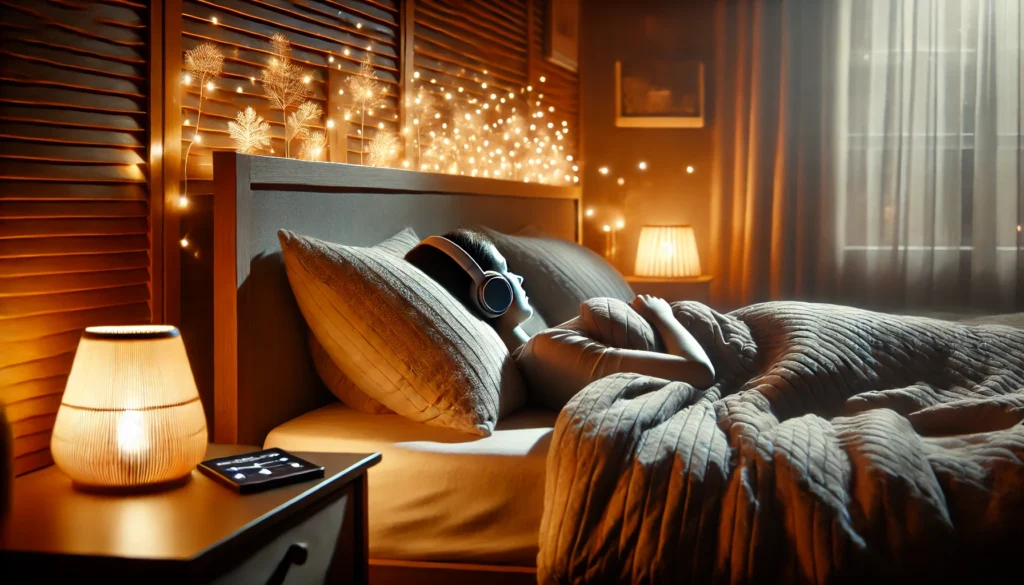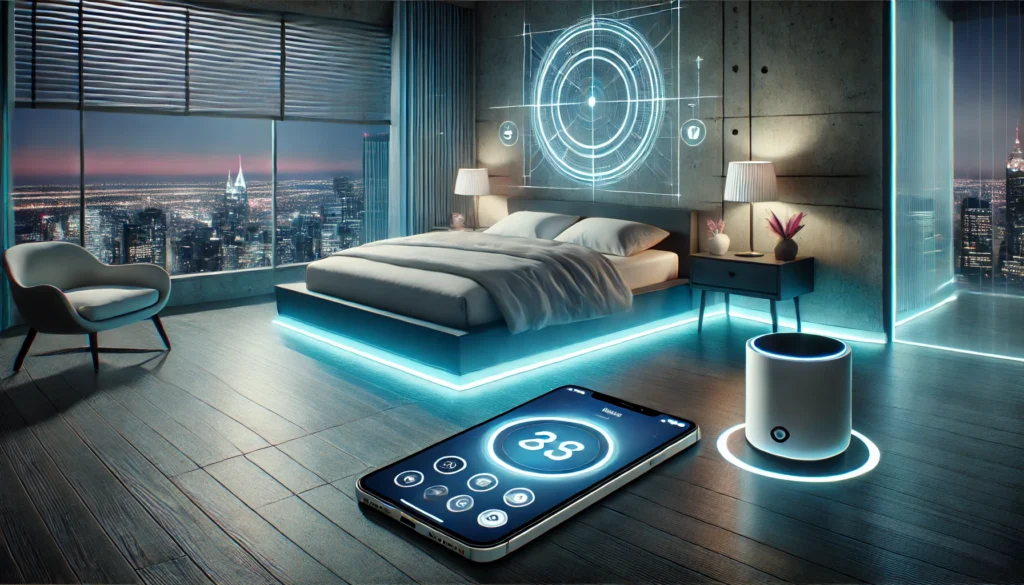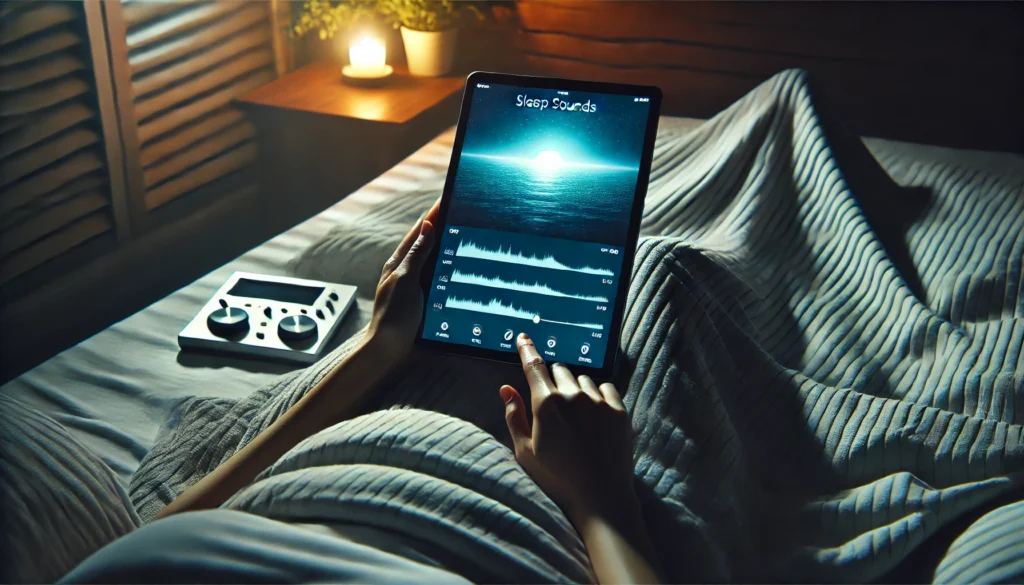Introduction
In an era where technology permeates every aspect of daily life, sleep applications have emerged as indispensable tools for improving rest and recovery. These apps leverage artificial intelligence, biometrics, and sound therapy to enhance sleep quality, making them a crucial component of modern wellness routines. Whether one struggles with falling asleep, maintaining deep sleep, or waking up refreshed, sleep aid apps offer customized solutions based on individual sleep patterns. This article explores the role of these applications, their benefits, and how to integrate them into a nightly routine for optimal rest.
You may also like: Essential Sleep Hacks for Biohackers: Optimize Your Rest for Peak Performance
The Science Behind Sleep Apps
Understanding how sleep apps work requires knowledge of sleep cycles, circadian rhythms, and neurological activity. These applications use motion detection, sound monitoring, and heart rate analysis to track sleep stages and provide actionable insights. By identifying patterns of restlessness, wakefulness, and deep sleep, they help users fine-tune their habits. Additionally, many apps incorporate cognitive behavioral therapy (CBT) techniques, relaxation methods, and binaural beats to promote faster sleep onset.

Features That Make a Sleep App Effective
An effective sleep app should provide comprehensive features that address various sleep disturbances. Essential components include:
- Sleep Tracking: Uses sensors or wearable devices to analyze sleep patterns.
- Smart Alarms: Wakes users at the optimal stage of sleep to reduce grogginess.
- Relaxation Techniques: Guided meditations, breathing exercises, and progressive muscle relaxation.
- Soundscapes and White Noise: Helps drown out distractions and improve sleep quality.
- Personalized Insights: Provides tailored feedback on how to improve sleep hygiene.
Top Sleep Aid Apps for Better Rest
- Sleep Cycle
- Tracks sleep patterns using sound analysis and accelerometer data.
- Features an intelligent alarm that wakes users in the lightest sleep phase.
- Calm
- Offers guided meditation, bedtime stories, and breathing exercises.
- Uses mindfulness techniques to reduce nighttime anxiety.
- Headspace
- Combines meditation with sleep-specific programs.
- Provides sleepcasts, which are audio experiences designed to induce sleep.
- Pzizz
- Uses dynamic soundscapes to improve sleep quality.
- Generates personalized audio sequences based on sleep habits.
- Relax and Sleep App
- Features customizable white noise, binaural beats, and ASMR.
- Includes a sleep timer to fade sounds out gradually.
How to Integrate Sleep Apps into Your Routine
To maximize the benefits of a sleep application, consistency is key. Users should establish a nighttime ritual that includes:
- Setting a Fixed Bedtime: Aligns the circadian rhythm for better sleep quality.
- Avoiding Screens Before Bed: Reduces exposure to blue light, which disrupts melatonin production.
- Using the App’s Relaxation Features: Engaging in guided meditations or soundscapes to wind down.
- Reviewing Sleep Data: Analyzing trends and making necessary lifestyle adjustments.
The Role of AI and Machine Learning in Sleep Enhancement
Advancements in artificial intelligence have significantly improved sleep apps’ accuracy and effectiveness. AI algorithms analyze vast amounts of sleep data to provide predictive insights and recommendations. Some applications also integrate with wearable devices to offer real-time biometrics, including heart rate variability and oxygen saturation levels. These innovations help create a more tailored sleep improvement experience.
Common Myths About Sleep Apps
While sleep apps provide valuable insights, misconceptions about their capabilities exist. Some believe that these apps can completely replace good sleep hygiene practices, but they are meant to complement, not substitute, healthy habits. Others assume all sleep tracking apps are equally effective, yet accuracy depends on the quality of data analysis and algorithm sophistication. Recognizing these distinctions helps users make informed decisions.
Future Trends in Sleep Technology
The future of sleep technology promises even more advanced solutions. Developments such as brainwave monitoring, VR-assisted sleep therapy, and AI-driven circadian rhythm regulation are on the horizon. Moreover, integration with smart home ecosystems will allow sleep environments to adapt dynamically, adjusting lighting and temperature based on sleep cycles.

Frequently Asked Questions (FAQ): Sleep Aid Apps and Bedtime Technology
1. How do sleep aid apps enhance sleep quality beyond basic sleep tracking? Sleep aid apps do more than simply track sleep patterns; they incorporate advanced artificial intelligence to analyze sleep cycles, detect irregularities, and provide personalized recommendations. Many sleep applications now integrate with wearable devices to measure heart rate variability and oxygen levels, offering deeper insights into sleep health. Additionally, some sleep aid apps use adaptive soundscapes, white noise, and guided meditation to actively improve sleep quality in real-time. The best apps also feature progressive muscle relaxation and cognitive behavioral therapy (CBT-I) techniques to reduce stress and anxiety before bedtime. By leveraging biofeedback and smart technology, these apps offer an interactive approach to better sleep management rather than passive tracking alone.
2. What makes a relax and sleep app effective for individuals with chronic insomnia? A relax and sleep app designed for chronic insomnia should include evidence-based techniques such as sleep restriction therapy, guided meditation, and progressive relaxation exercises. Unlike generic bedtime apps, specialized sleep applications incorporate cognitive behavioral therapy for insomnia (CBT-I), which has been proven to help rewire the brain’s sleep associations. Additionally, the best sleep aid apps allow users to create personalized nighttime routines, adjusting light exposure and soundscapes to optimize melatonin production. Many modern sleep applications also incorporate breathing exercises, binaural beats, and gentle hypnosis to guide users into deep sleep. By targeting the root causes of insomnia—such as stress, overstimulation, and poor sleep hygiene—these apps help individuals establish long-term healthy sleep patterns.
3. Are sleep applications a viable alternative to pharmaceutical sleep aids? While sleep applications cannot replace prescription medications for severe sleep disorders, they offer a natural and sustainable alternative for individuals with mild to moderate sleep disturbances. Many sleep aid apps focus on addressing the behavioral and psychological factors that contribute to poor sleep, such as anxiety, inconsistent bedtime routines, and excessive screen exposure. Unlike pharmaceutical sleep aids, sleep applications do not cause dependency or morning grogginess, making them a safer long-term solution. Some bedtime apps also integrate with smart home technology, adjusting room temperature and lighting to create an optimal sleep environment. For individuals looking to transition away from medication, a well-designed sleep application can be an effective tool when combined with lifestyle adjustments and proper sleep hygiene.
4. How do bedtime apps use sound therapy to improve sleep? Bedtime apps utilize sound therapy in multiple ways, including white noise, pink noise, and nature sounds to mask disruptive environmental noise and promote relaxation. Some advanced sleep applications also offer binaural beats, which use different frequencies in each ear to synchronize brainwaves and induce deep sleep. Additionally, a relax and sleep app might include personalized soundscapes that evolve based on sleep cycle tracking, ensuring optimal auditory stimulation throughout the night. Many sleep aid apps also feature guided sleep stories and ASMR (Autonomous Sensory Meridian Response) triggers to enhance relaxation. By using scientifically backed sound frequencies and mindfulness techniques, these apps help users enter deep sleep more consistently.
5. Can sleep aid apps help individuals with shift work sleep disorder? Yes, sleep aid apps can be highly beneficial for individuals with shift work sleep disorder by providing personalized sleep scheduling and circadian rhythm management tools. Many sleep applications include smart alarm features that wake users during the lightest stage of sleep, reducing grogginess after irregular sleep cycles. Additionally, some bedtime apps offer light exposure therapy, using blue light filtering and simulated sunrise alarms to help reset circadian rhythms. Sleep aid apps also provide relaxation techniques specifically designed for shift workers who need to fall asleep quickly despite unconventional schedules. By optimizing sleep efficiency and minimizing disruptions, these apps support better sleep adaptation for those with demanding work hours.
6. How do bedtime apps integrate with wearable sleep technology? Many modern bedtime apps sync with wearable devices such as smartwatches, fitness trackers, and smart rings to provide real-time sleep analytics. These integrations allow sleep applications to track heart rate, oxygen saturation, and movement patterns, giving users a comprehensive overview of their sleep health. Advanced sleep aid apps analyze this data to detect sleep disturbances such as restless leg syndrome, apnea episodes, or inconsistent breathing patterns. Some sleep applications also incorporate biometric data to personalize relaxation exercises, adjusting soundscapes and guided meditations based on real-time stress levels. This seamless integration between apps and wearable technology enhances accuracy in sleep tracking and sleep improvement strategies.
7. What role does guided meditation play in sleep applications? Guided meditation in sleep applications is designed to help users calm their nervous system, reduce stress, and transition smoothly into sleep. Many relax and sleep apps offer guided mindfulness exercises that focus on breath control, body scanning, and visualization techniques to promote relaxation. Additionally, bedtime apps often include sleep hypnosis sessions, which use soothing voice narration to reinforce positive sleep habits and break negative thought patterns. Sleep aid apps leveraging guided meditation also integrate adaptive techniques, adjusting the session’s pace and intensity based on user feedback. By incorporating mindfulness practices, these apps provide an effective, non-pharmacological approach to improving sleep quality.
8. Are sleep applications suitable for children and individuals with sensory sensitivities? Yes, many sleep applications offer specialized features designed for children and individuals with sensory sensitivities. Some bedtime apps include customizable soundscapes with gentle, rhythmic sounds tailored to reduce overstimulation and promote relaxation. Additionally, many sleep aid apps designed for children feature bedtime stories narrated in soothing tones to ease nighttime anxiety. For individuals with sensory processing challenges, sleep applications offer adaptive volume control and personalized ambient settings to create a more comfortable sleep environment. The best sleep applications also include gradual light-dimming features, helping individuals transition into deep sleep without abrupt changes in their surroundings.
9. Can sleep applications improve sleep consistency for frequent travelers? Frequent travelers often struggle with inconsistent sleep patterns due to jet lag and unfamiliar sleeping environments, making sleep applications a valuable tool for sleep regulation. Many bedtime apps offer circadian rhythm adjustment features, allowing users to gradually shift their sleep schedule before traveling to new time zones. Additionally, sleep aid apps provide travel-friendly relaxation techniques, such as adaptive white noise and breathing exercises, to minimize sleep disruptions in unfamiliar locations. Some sleep applications also feature time zone syncing, automatically adjusting wake-up and wind-down times based on the user’s geographic location. By leveraging these tools, travelers can maintain healthier sleep cycles despite constantly changing environments.
10. How do sleep aid apps personalize sleep improvement plans? Advanced sleep aid apps use artificial intelligence and machine learning to personalize sleep improvement plans based on user habits and biometric data. These apps analyze patterns in sleep cycles, stress levels, and daily activity to create tailored recommendations for enhancing rest. Many sleep applications also provide customized relaxation routines, adjusting sleep-inducing sounds, guided meditations, and light exposure therapy to fit individual needs. Additionally, some relax and sleep apps allow users to track dietary and lifestyle factors that influence sleep quality, offering insights on optimizing nutrition and exercise for better rest. By continuously adapting to user feedback and physiological responses, these apps provide highly individualized sleep enhancement strategies.

Conclusion
Sleep applications are revolutionizing the way individuals approach rest and recovery. By leveraging cutting-edge technology, these apps offer personalized insights and practical tools for improving sleep quality. Incorporating a well-designed sleep app into daily routines can lead to long-term benefits, including increased energy levels, improved cognitive function, and overall well-being. As advancements continue, the role of sleep aid apps in optimizing health will only become more significant.
sleep optimization, sleep tracking, bedtime routines, relaxation techniques, sleep cycles, sleep technology, smart alarms, white noise therapy, guided meditation, cognitive behavioral therapy, mindfulness, binaural beats, sleep disorders, circadian rhythm, AI in sleep, deep sleep enhancement, wearable sleep tracking, digital wellness, smart home integration, sleep hygiene.
Further Reading:
The Best Sleep Apps to Help You Get Some Shut-Eye, Tried and Tested
The Best Sleep Gadgets and Apps
Sleep and the Brain: Strategies for Enhanced Rest and Recovery
Disclaimer
The content provided by HealthXWire is for informational purposes only and should not be construed as medical advice, diagnosis, or treatment. While we strive for accuracy, the information presented on this site may not reflect the most current research or medical guidelines. Always seek the advice of your physician or other qualified health provider with any questions you may have regarding a medical condition. HealthXWire does not endorse, recommend, or guarantee the efficacy of any products, services, or treatments mentioned on this site. Users should not disregard professional medical advice or delay seeking it because of something they have read on HealthXWire. HealthXWire is not liable for any damages, loss, or injury arising from reliance on the information provided herein.


